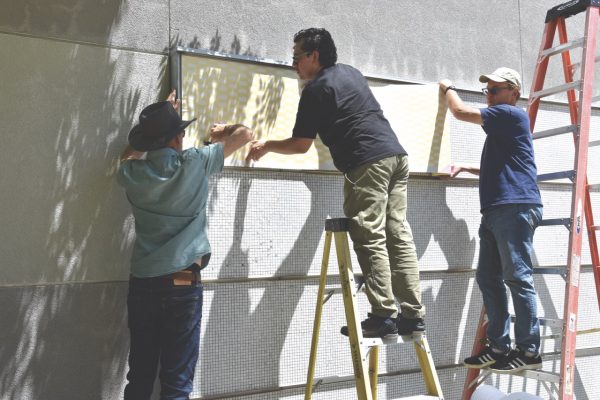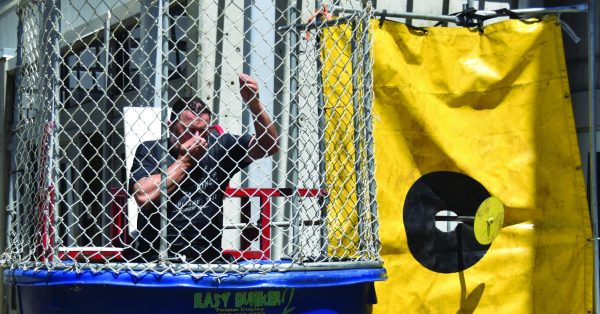The burning truth
LMC students largely uneducated about smoking policy
There is an old saying passed down to incoming students at colleges and universities across America : College is just like high school, except with ashtrays.
Los Medanos College does not escape this stereotype, despite it being a non smoking campus. Many smokers who attend LMC flock to the parking lots, or to one of two designated smoking areas on campus, to fit in a cigarette before, between or after class. However, not all students abide by the smoking restrictions set in place by LMC, or within Contra Costa County.
In 2006, the county passed the Contra Costa Secondhand Smoke Protection Ordinance after scientific studies from the California Environmental Protection Agency and the Surgeon General, conducted that same year, clearly showed that secondhand smoke is a health risk.
According to the Center for Tobacco Control Research and Education “scientific evidence has firmly established that there is no safe level of exposure to second hand smoke [SHS], a pollutant that causes serious illnesses in adults and children. There is also indisputable evidence that implementing 100% smoke-free enivronments is the only effective way to protect the population from the harmful effects of exposure to SHS.”
This ordinance limit’s smokers to designated smoking area’s and prohibits smoking close to the entrance or exits of any public building.
Contra Costa County ordinance 2006-66 specifically states that “all areas within 20 feet of the doors, operable windows, air ducts and ventilation systems of any enclosed worksite or enclosed places open to the public, except while passing on the way to another destination.”
LMC, in compliance with California law, adopted it’s own smoking policy in 2006 when it officially became a non smoking campus, and can be found in the LMC catalogue as the following:
“Smoking is not permitted within college buildings, the quad, offices, cafeteria, interior hallways or in those walkways which are not open to the air (due to a lack of air circulation). This policy prohibits smoking and other uses of tobacco products in any area designated as “no smoking” by local ordinance, fire safety, or health codes. At LMC, smoking is allowed in parking lots only.”
The Experience staff recently surveyed 258 students and staff members about their experiences with second hand smoke on campus. Twenty-seven percent of those surveyed identified themselves to be between the ages of 18 and 25, and considered themselves as smokers or ex-smokers, 59 percent did not know the designated smoking areas on campus are located in parking lots B and C, and 77 percent of those surveyed did not know LMC is a non-smoking campus.
“To help ensure that all individuals comply with the policy some signage is posted throughout the campus,” said Dean of Student Success David Belman. “If individuals are found smoking in unauthorized locations, they are typically informed by college personnel or police services members that they must stop and can only smoke in the parking lots. For the most part, individuals appreciate being notified, stop smoking where they are, and use only authorized locations after that point.”
While LMC has created a policy to comply with state law and protect the population from secondhand smoke, there are students who remain unsatisfied with the campus’s attempt to provide a smoke-free environment.
“They should not smoke in the areas that are busy,” said LMC student Karen Hernandez.
Hernandez, who is a cancer survivor, said when she sees fellow students smoking on campus and not in the designated areas, it bothers her.
“At least move when you see someone coming as a courtesy to their health,” said Hernandez. “Non smoking areas are there for a reason.”
Bradley Dexter, an ex-smoker attending LMC, also reported encountering smoking in non smoking areas on campus, and said he was “irritated with the smell and had to leave the area.”
Although according to Belman students who are caught smoking outside of designated areas are asked to take their cigarettes elsewhere, Dexter claimed it is not enough.
“I would like to see heavier enforcement,” he said.
Hernandez and Dexter aren’t the only people unhappy with smokers not abiding by the designated smoking areas. Officer Michael Hotton of Los Medanos College Police Services said that complaints of smoking in non-smoking areas are a monthly occurrence.
“We get around two to three calls a month in regards to smokers being too close to buildings. As people become more aware of their health in general, we get calls to ask smokers to move into the parking lots,” said Hotton. “The person or persons smoking usually don’t realize that they have to be in the parking area.”
Cigarettes smoke being harmful is not a new discovery. In 1985 the Unites States Surgeon General started issuing warnings that cigarettes cause lung cancer, heart disease, emphysema, and complicates pregnancy, but that is just a short list according to Radiologist Eric Saldinger, M.D. who practices at Sutter Health Medical Center in Antioch and Walnut Creek.
“It causes Chronic Obstructive Lung Disease, a condition that literally eats away at the lung, making breathing difficult,” said Saldinger, who went on to say that the cancers caused by smoking go beyond just the lung. “Cancers associated with smoking include head and neck cancers, pancreatic cancer, stomach cancer, cervical cancer, lung cancer, bladder cancer, and leukemia.”
As of July, 1,178 colleges and universities in the United States had committed their institution to being smoking free, and eliminated all indoor and outdoor smoking from their campuses, according to Americans for Nonsmokers’ Rights. This upward trend is attributed to the growing awareness of the health risks that come from tobacco use.
Salinder criticized the government’s lack of regulation on smoking.
“Smoking is responsible for one in five deaths in the U.S. In my opinion, it’s a complete travesty that the government regulates and limits food and environmental carcinogens and air and water pollution, while still allowing the sale of cigarettes.”
Besides annoyance and health concerns, smoking at LMC also affects the more aesthetic parts of campus. The tar found in cigarettes, which damages the lungs, also damages the school. When a cigarette is put out on the ground and stepped on, the tar still in the cigarette is pushed into the concrete. The tar in the concrete then has to be removed by the LMC custodial staff, who report this happens both inside and outside the designated smoking areas.
“We had to pressure wash the concrete to get it clean,” explained LMC Custodial Manager Barry Edwards, “The cigarettes leave black tar spots on the ground. There are a lot of cigarettes everywhere that have to be picked up,” said Edwards.
The knowledge that cigarette smoke is harmful for health and environmental reasons may be widespread, across the country and across LMC. Regardless, 19 percent of those surveyed report they have been a victim of unwanted smoke, and 20 percent indicate they have seen smokers lighting up outside of designated smoking areas. For those who refuse to abide by smoking policies set in place by LMC, there are consequences.
“If the person that is smoking does not comply with our request, it becomes a code of conduct issue with the college, and we refer the person to the dean of students for the college to deal with,” explained Hotton. “This is not a criminal issue, we prefer that the college take care of these issues administratively.”









